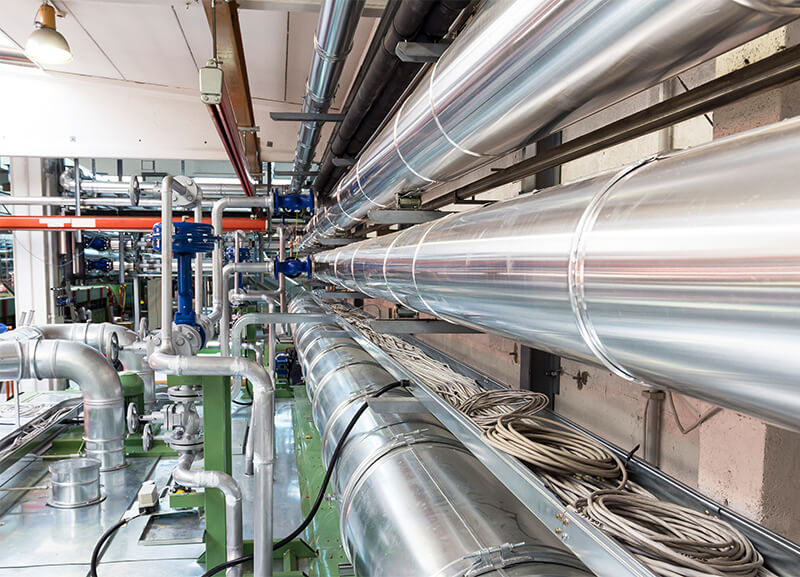Primary Components of HVAC Design You Need to Know
HVAC systems are the largest users of energy in commercial buildings, according to a study by the U.S. Department of Energy. That being said, the cost of running your building’s HVAC system will be among your greatest expenses, so it’s important to carefully select the components of your HVAC design. After all, many people rely on the system to keep them safe and comfortable in the hot summers and cold winters. Therefore, it helps to understand the importance of carefully designing your HVAC system, as well as the functionality of each part of the system.
Essential HVAC Components

To cool or warm a building, the fan forces air through the heat exchanger and into the air ducts.
- Refrigerant – absorbs and releases heat in the HVAC system to cool or warm air.
- Compressor – puts pressure into the refrigerant because the pressure is the same as energy. The refrigerant later gives up the energy as heat.
- Condenser – changes vapor into a liquid so it can absorb heat.
- Expansion valve – monitors the refrigerant passing into the evaporator so the pressure does not damage it.
- Evaporator – converts liquid into a vapor so it can give off heat.
- Heat exchanger – transfers the heat in the air into the refrigerant in an air conditioner. Conversely, the heat exchanger transfers the heat in the refrigerant into the air in a heater.
- Fan and ducts – the fan forces air through the heat exchanger and into the ducts to warm or cool a building.
All HVAC Designs Rely on the Same Concept
The air conditioner in an HVAC system operates on a vapor compression cycle. Interestingly, it uses the same parts as your fridge at home. This cycle uses a scientific principle, known as a phase change cycle. Fluids absorb heat as they change phase from liquid to gas and give off heat as they change phase back from gas to liquid.
An air conditioner uses a heat exchanger to cool air passing by the evaporator and circulates this cooled air through the building. The condenser absorbs waste heat from the refrigerant and dumps it to the outside air. The heating portion of the HVAC system operates in one of two ways.
1. Reversible Heat Pump – In one system, the condenser and evaporator exchange roles. That is, the condenser becomes an evaporator and the evaporator becomes a condenser. When reversed, the heat exchanger warms up air passing by the condenser and a fan circulates this warm air through the building.
2. Furnace – As an alternative, a furnace connects the duct system. The furnace combusts fuel, such as natural gas or heating oil, to generate heat. A heat exchanger warms the air and a fan circulates the warm air through the building.
Factors in Choosing HVAC Components
When choosing the components for an HVAC system, the first things to consider are capacity and efficiency. Capacity and efficiency are intertwined and must be matched to the size and design of the building. An undersized system will be inefficient because it will strain to keep up with demand. An oversized system, on the other hand, will be inefficient because it will consume more energy than needed for climate control.
These factors are just the tip of the iceberg in HVAC design. At The Severn Group, we can provide assistance in designing an HVAC system that fits the needs of your building. We also offer cost-effective solutions to any commercial HVAC issues. If you need HVAC servicing, contact The Severn Group today, or call 443-837-0828.
